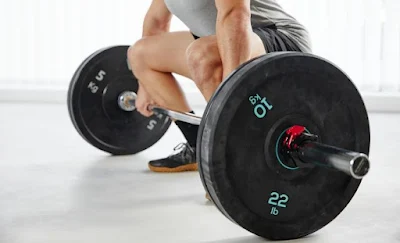The Science of Weightlifting: How It Increases Muscle Strength and Growth
Weightlifting, or resistance training, is one of the most effective ways to build muscle strength and size. But how exactly does lifting weights increase muscle mass? This article explores the science behind muscle hypertrophy (growth) and explains how weight training triggers physical adaptations for muscle gains.
1. Muscle Hypertrophy: The Key to Muscle Growth
Muscle hypertrophy is the process by which muscle fibers grow in size. This occurs primarily due to two main types of hypertrophy:
- Myofibrillar Hypertrophy: This type of hypertrophy increases the size and number of myofibrils, which are the contractile units within muscle fibers. It leads to increased strength and density.
- Sarcoplasmic Hypertrophy: In this type, there’s an increase in the sarcoplasm (the fluid around the muscle fibers), which improves muscle endurance and size but doesn’t directly increase strength.
2. How Weightlifting Stimulates Muscle Growth
Weightlifting creates microscopic damage to muscle fibers, triggering a repair response. Here’s how it works:
- Mechanical Tension: Lifting heavy weights creates tension on the muscles, activating growth signals.
- Metabolic Stress: The buildup of metabolic byproducts (like lactate) during intense lifting creates stress that contributes to muscle growth.
- Muscle Damage: Small tears in the muscle fibers occur with heavy lifting. These tears signal the body to repair and strengthen the muscles, resulting in hypertrophy.
3. The Role of Protein and Nutrition
For muscles to grow, the body needs an adequate supply of protein and calories to repair and build muscle fibers. Protein is essential for muscle repair, while calories provide the energy needed for muscle recovery.
4. The Importance of Rest and Recovery
Muscles don’t grow while you’re lifting; they grow during rest. When you sleep and rest, the body repairs and strengthens the muscles, making recovery essential to maximizing muscle gains.
5. Hormones and Muscle Growth
Certain hormones play a significant role in muscle growth, including:
- Testosterone: Boosts protein synthesis, helping muscles repair and grow.
- Growth Hormone (GH): Promotes tissue growth and muscle repair.
- Insulin-like Growth Factor 1 (IGF-1): Supports muscle growth by enhancing protein synthesis.
6. Training Principles for Building Muscle
There are key training principles for maximizing muscle growth:
- Progressive Overload: Gradually increasing the weight, reps, or intensity over time to keep challenging muscles.
- Volume and Frequency: Training each muscle group with enough frequency (1–3 times a week) and volume (sets and reps) is critical for growth.
Conclusion
Weightlifting is a scientifically-backed way to increase muscle strength and size through physiological adaptations. By understanding the principles of muscle hypertrophy, nutrition, and recovery, individuals can optimize their training to achieve their fitness goals and maximize muscle growth.


















0 Comments